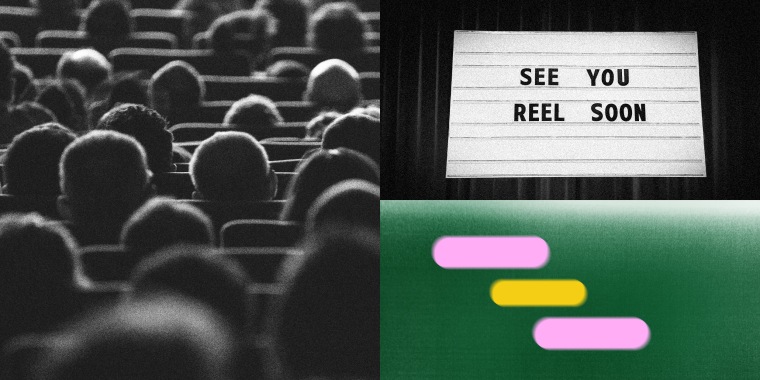2022 was bad — but it could have been worse. This essay is part of an end-of-the-year series looking at the silver linings.
It’s not that theatrical film exhibition was in a particularly good place before the pandemic. For years, we witnessed the precipitous decline of adult-oriented material, of the kind of midbudget dramas and comedies that studios used to finance freely, as a small risk for, at the very least, a small gain. But the increasing 21st-century domination of sequels, tentpoles and comic book movies made studios less inclined to finance those midrange efforts, choosing instead to go all-in on big-budget product. As a result, audiences began to treat the movies less like art and more like an event — only worth the trouble and expense when spectacle was involved.
Movie theaters didn’t become obsolete. We missed going to them and were anxious to return.
Then, with Covid-19 lockdowns, the spectacle was gone basically overnight. The year or so of outright shuttering, and the slow and sometimes stumbling return of regular moviegoing, had many a filmmaker and industry observer — not to mention audience members — concerned that going to the movies would go the way of the dinosaur. After all, it was hard not to imagine that the streaming stopgaps we’d used while trapped at home would just become the way that feature films were consumed from here on out. Yet the astounding box-office figures of 2022 tell a different story: Movie theaters didn’t become obsolete. We missed going to them and were anxious to return.
Some of what we see in this year’s receipts confirms the preferences of the past — and, if anything, shows that the shutdown period accelerated them. That much is evident when we look at the top 10 box-office attractions, which consist of nine direct sequels (“Avatar: The Way of Water,” “Doctor Strange in the Multiverse of Madness,” “Jurassic World: Dominion,” etc.) and one indirect one (the reboot of Batman). And the top 20 sports several titles that, while not sequels, capitalize on familiar brand names: “Lightyear,” “Uncharted,” “The Bad Guys,” the DC extension “Black Adam” (with its much-ballyhooed cameo by Henry Cavill’s Superman), and a wildly successful film about one of the first capital-B brands: “Elvis.”
However the ubiquity of the familiar was not entirely a negative, for once. At the time of writing, the gigantic delta between the first-place title (“Top Gun: Maverick,” with $718 million) and its runner-up (“Black Panther: Wakanda Forever,” at $427 million) is striking but simple. Unlike “Wakanda Forever,” which (like most big movies of this era) made the bulk of its money in a few short weeks from a regular, dedicated fandom, “Top Gun” brought in audiences for months, and not necessarily because of brand loyalty (keep in mind, it was a sequel to a 36-year-old film). The reason for those legs is straightforward: “Top Gun: Maverick” is very, very good, both thrilling and thoughtful, engaging and grappling with its legacy rather than merely coasting off nostalgia, and people came to the theater to experience it over and over. It offered up the best of the moviegoing experience: spectacle, plus quality, plus rewatchability.
But best of all, the hunger for the overly familiar was not the only story to be told this year. Several original films were solid commercial hits, from Jordan Peele’s inventive “Nope” to the horror smashes “Smile” and “The Black Phone” to the old-fashioned star vehicles “The Lost City” and “Ticket to Paradise” to the mini-epics “Everything Everywhere All at Once” and “The Woman King” to unclassifiable outliers like “Dog” and “The Menu.” The majority of moviegoers likely didn’t see all of them, and that’s part of the point; this year’s commercial hits didn’t have to appeal to all moviegoers but could target niche audiences and still make a tidy profit.
Make no mistake: Theatrical exhibition is still finding its way back to the pre-2020 world, and certain adjustments of the pandemic era have carried over to the current moment, with disastrous results for prestige filmmaking. (Parents, for example, may be reluctant to part with the cost of a babysitter, food and movie tickets for critical favorites like “The Fabelmans,” “The Banshees of Inisherin” and “Tár” that will turn up on demand in shortly after their theatrical releases.) “Going to the movies” may well continue to evolve into a spectacle-only situation, focusing solely on the kind of movies that Martin Scorsese famously (and, to some, contentiously) compared to amusement park rides — something closer to the current iteration of the Broadway stage. But if the pandemic-era absence of theatrical releases proved one thing, it’s that people love going to the movies, really love it, and not just to see Marvel movies. And that is something to be truly grateful for.
